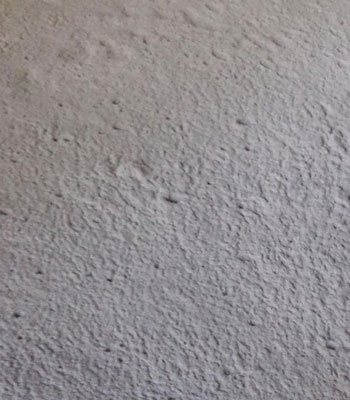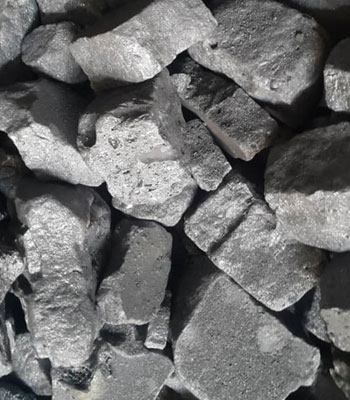Microsilica Applications in Concrete
The 65 percent of global microsilica production used for concrete and cement. The applications include:
• Blended cements
• High Strength Concrete (HSC)
• High Performance Concrete (HPC)
• Self-Consolidating Concrete (SCC)
• Shotcrete
• Ultra-low permeability concrete
• Cementitous repair products
• Additive agent for carbon fiber composites


Dosage
IFI Microsilica is recommended at an addition dosage of 7 to 15% by mass of cement.
Advantages of Using Silica Fume
• High early compressive strength
• Very low permeability to chloride and water intrusion
• Enhanced durability
• Increased modulus of elasticity
• High tensile flexural strength
• Increased toughness
• High cohesiveness and low return materials
• Superior resistance to alkali–silica reaction (ASR)
• Low bleeding
• Increased abrasion resistance on decks, floors, overlays and Spillway
• Decreased risk of concrete surface dusting
• Superior resistance to chemical attack from chlorides, acids, and sulfates
Benefits
• Reduce life cycle cost
• Reduce construction costs by designing slender elements
• Reduce bridge construction costs by increasing span
• Reduce shotcrete costs by decreasing return materials
• Reduce paving costs by one pass finishing
• Reduce corrosion protection costs
Environment Issue
Microsilica is a byproduct of the factory and thereby does not have cement problems.
Examples
• Milad Tower
• Bandar Abbas Desalination Plant
• Asaluyeh Water Tank
• Ahvaz Subway Infrastructure
• Qom Monorail
Chemical Composition
| SiO2 | Al2O3 | Fe2O3 | Cl | C | Na2O | K2O | MgO | S | CaO | P | LOI | pH |
| 90 -95 | 0.6-1.2 | 1.2-1.8 | 0.04-0.07 | 0.8-2.0 | 0.3-0.6 | 0.4-0.8 | 0.6-1.2 | 0.04-0.08 | 0.5-1.0 | 0.04-0.06 | 1.5-2.5 | 8.0-9.5 |
Physical Properties
| Bulk density (as-produced), kg/m3 | Specific gravity | Physical state | Particle size (typical) | Color | Specific surface m2/g |
| 310 – 350 | 2.2 | amorphous | < 1 µm | Light gray | 15 – 30 |
Packaging
• Big Bag (750 kg)
• Medium Bag (500 kg)
• Small bag (40 kg)
Export Destination
• India
• Pakistan
• Iraq
• Turkey
• Tajikistan
• UAE
• Oman
• Qatar
Storage
Microsilica stores similar to cement, except the silo used for microsilica be equipped with a rubber fill hose rather than a steel pipe. If the material gets wet there will not be a hydration reaction. However, the microsilica agglomerates may become more difficult to disperse when assed to concrete. Ensure that the mixing is adequate to break up the particle agglomerations. Otherwise, it will serve as filler material.
Batching and Mixing
Never place microsilica in any form into an empty mixer before any other ingredients. Do not load more than 63% of rated capacity of drum.
Adding Admixture
It is necessary to use microsilica in combination with a water-reducing admixture or a superplasticizer. The required amount of AEA will usually be 150 to 200% of dosage without microsilica.
Bleeding
Bleeding microsilica concrete is zero or very low. The lack of bleeding means that finishing can start earlier and be completed sooner. The potential of plastic shrinkage cracking in microsilica concrete is higher than normal concrete. Proper curing can reduce plastic shrinkage cracking.
Placing and Curing
Microsilica concrete has been successfully placed by all means of placing normal concrete. Curing be started 10 to 15 minutes after the concrete placed.
Health Issues
• CAS Number: 69012-64-2
• Incompatible materials: Hydrofluoric acid (HF)
• Use safe work practices to avoid eye or skin contact and inhalation.
• Heating the product above 1000 C can result in the formation of crystalline SiO2-modifications as cristobalite / tridymite which may cause pulmonary fibrosis (silicosis).
Chemical & Physical Properties of Silica Fume Produced by Iran Ferroalloy Industries Co. Compared to Different Standards
| Chemical & Physical Composition | ASTM C 1240 – 2015 | EN 13263 – 2005 | JIS A 6207 – 2016 | Iran Ferroalloy Industries Silica Fume 2009 – 2017 |
| SiO2 (%) | Min. 85% | Min. 85 | Min. 85 | 90 – 95 |
| Al2O3 (%) | _ | Max. 1.5 | Max. 1.5 | 0.6 – 1.2 |
| Fe2O3 (%) | _ | Max. 2 | Max. 2 | 1.2 – 1.8 |
| CaO (%) | _ | Max. 1 | Max. 1 | 0.5 – 1.0 |
| MgO (%) | _ | _ | Max. 5 | 0.6 – 1.2 |
| Na2+0.658k2O (%) | _ | Max. 2 | Max. 2 | 0.7 – 0.9 |
| C (%) | _ | _ | _ | 0.8 – 2.0 |
| Cl (%) | _ | Max. 0.3 | Max. 0.1 | 0.05 – 0.07 |
| pH | _ | _ | 4 – 8.5 | 8 |
| Moisture Content (%) | Max. 3 | _ | _ | Max. 1.5 |
| Loss on Ignition (LOI) (%) | Max. 6 | Max. 4 | Max. 5 | 1.5 – 2.5 |
| Special Surface (m2/gr) (%) | Min. 15 | 15 -35 | Min. 15 | 15 – 30 |
| Bulk Density (Kg/m3) (%) | _ | _ | _ | 310 – 350 |
| Pozzolanic Activity Index at 7 days (%) | Min. 105 | _ | Min. 95 | 110 – 115 |
| Percent Retained on 45 µm Sieve (%) | Min. 10 | _ | _ | 0.8 – 1.0 |






Reviews
There are no reviews yet.